Interpretation in Ásbyrgi: Communicating with National Park Visitors in Iceland
Abstract
:1. Introduction
1.1. Environmental Sustainability and Tourism in Iceland
1.2. Effective Interpretation
1.3. Using Interpretation as a Management Tool to Enhance Both Visitor Satisfaction and Environmental Sustainability in Iceland
1.4. Aim, Contribution and Structure
2. Materials and Methods
2.1. Study Location
2.2. Observations
2.3. Interviews
3. Results and Discussion
3.1. Visitor Profile and Satisfaction with Interpretation
3.1.1. Visitor Profile
3.1.2. Satisfaction with Current Information
3.2. The Type of Information to Convey
3.3. How the Information Should Be Presented
4. Conclusions
Limitations and Further Research
Author Contributions
Funding
Institutional Review Board Statement
Informed Consent Statement
Data Availability Statement
Acknowledgments
Conflicts of Interest
References
- Csagoly, Z.; Sæþórsdóttir, A.D.; Ólafsdóttir, R. Tourism changing the edge of the wild. J. Outdoor Recreat. Tour. 2017, 17, 1–8. [Google Scholar] [CrossRef]
- Jóhannsdóttir, E.Ö. Ferðavenjur og Viðhorf Erlendra Ferðamanna á Norðurlandi. Skýrsla 2 [Travel Behaviour of Foreign Travellers in North Iceland. Report nr. 2]. Icelandic Tourism Research Centre and Department of Rural Tourism, Hólar University. 2020. Available online: https://www.rmf.is/static/research/files/skyrsla_2_vidtalsrannsoknpdf (accessed on 10 August 2021).
- Sæþórsdóttir, A.D.; Hall, C.M.; Wendt, M. From Boiling to Frozen? The Rise and Fall of International Tourism to Iceland in the Era of Overtourism. Environments 2020, 7, 59. [Google Scholar] [CrossRef]
- Icelandic Tourist Board. Tourism in Iceland in Figures 2018. 2018. Available online: https://www.ferdamalastofa.is/static/files/ferdamalastofa/Frettamyndir/2018/oktober/tourism-in-iceland-2018.pdf (accessed on 10 August 2021).
- Icelandic Tourist Board. 2021. Available online: https://www.ferdamalastofa.is/en/recearch-and-statistics/numbers-of-foreign-visitors (accessed on 3 August 2021).
- Icelandic Tourist Board. Ferðalög Íslendinga 2020 og Ferðaáform Þeirra 2021 [Domestic Tourism 2020 and Icelanders Travel Plans in 2021]; Icelandic Tourist Board: Akureyri, Iceland, 2021; ISBN 978-9935-522-06-1. Available online: https://www.ferdamalastofa.is/static/files/ferdamalastofa/kannanir/4031670_ferdamalastofa_040521.pdf (accessed on 10 August 2021).
- Helgadóttir, G.; Einarsdóttir, A.V.; Burns, G.L.; Gunnarsdóttir, G.Þ.; Matthíasdóttir, J.M.E. Social sustainability of tourism in Iceland: A qualitative inquiry. Scand. J. Hosp. Tour. 2019, 19, 404–421. [Google Scholar] [CrossRef]
- Sutherland, D.; Stacey, J. Sustaining Nature-Based Tourism in Iceland; OECD Economics Department working papers No. 1422; OECD: Paris, France, 2017. [Google Scholar]
- Cook, D.; Saviolidis, N.; Davíðsdóttir, B.; Jóhannsdóttir, L.; Ólafsson, S. Synergies and Trade-Offs in the Sustainable Development Goals—The Implications of the Icelandic Tourism Sector. Sustainability 2019, 11, 4223. [Google Scholar] [CrossRef] [Green Version]
- OECD Iceland. OECD Tourism Trends and Policies 2018; OECD Publishing: Paris, France, 2018. [Google Scholar] [CrossRef]
- Aquino, J.; Burns, G.L. Creative Tourism: The Path to a Resilient Rural Icelandic Community. In Creative Tourism in Smaller Communities: Place, Culture and Local Representation; Scherf, K., Ed.; University of Calgary Press: Calgary, AB, Canada, 2021. [Google Scholar]
- Liftenegger, M.; Marek, V.; Peters, H.; Pirnea, R.; Rampitsch, M. Case Study: The influences of tourism on natural, economic, social and cultural values in Iceland with special emphasis on sustainable tourism. In Exploring Regional Sustainable Development Issues; Barton, A., Dlouhá, J., Eds.; Grosvenor House Publishing Ltd.: Surrey, UK, 2014; pp. 299–352. [Google Scholar]
- Jóhannsdóttir, L.; Cook, D.; Minelgaite, I. Economic, environmental and social sustainability perspectives on Iceland’s expanded tourism sector. In Development and Transformation Processes in the Tourism Industry under the Conditions of Globalization; Kinderis, R., Ed.; Klaipeda State University of Applied Sciences: Klaipeda, Lithuania, 2019. [Google Scholar]
- Ólafsdóttir, R.; Runnström, M.C. Accessing hiking trails conditions in two popular destinations in the Icelandic highlands. J. Outdoor Recreat. Tour. 2013, 3, 57–67. [Google Scholar] [CrossRef]
- Schaller, H. The Footprint of Tourism: Ecological Sensitivity and Hiking Trail Assessment at Selected Protected Areas in Iceland and Hokkaido. Icelandic Tourism Research Centre. 2014. Available online: https://rafhladan.is/bitstream/handle/10802/9667/report-hiking-trails-harald-final-forprint.pdf?sequence=1 (accessed on 12 August 2021).
- Environment Agency of Iceland. Ástandsmat Áfangastaða Innan Friðlýstra Svæða [Status Evaluation on Tourist Destinations in Protected Areas]. 2018. Available online: https://ust.is/library/Skrar/utgefid-efni/astand-fridlystra-svaeda/%C3%81standsmat%20fer%C3%B0amannasta%C3%B0a%20innan%20fri%C3%B0l%C3%BDstra%20sv%C3%A6%C3%B0a-2018.pdf (accessed on 10 August 2021).
- Environment Agency of Iceland. Svæði í Hættu [Regions in Danger]. 2018. Available online: https://www.ust.is/nattura/natturuverndarsvaedi/astand-natturuverndarsvaeda/svaedi-i-haettu/ (accessed on 10 August 2021).
- Saviolidis, N.; Cook, D.; Davidsdóttir, B.; Jóhannsdóttir, L.; Ólafsson, S. Challenges of national measurement of environmental sustainability in tourism. Curr. Res. Environ. Sustain. 2021, 3, 100079. [Google Scholar] [CrossRef]
- Ministry of Industries and Innovation and the Icelandic Travel Industry Association. Road Map for Tourism in Iceland. 2015. Available online: https://www.stjornarradid.is/media/atvinnuvegaraduneyti-media/media/Acrobat/Road-Map-for-Tourism-in-Iceland.pdf (accessed on 15 August 2021).
- Atvinnuvega-og Nýsköpunarráðuneytið. [n.d.] Leiðandi í Sjálfbærri Þróun: Íslensks Ferðaþjónusta til 2030. Available online: https://www.stjornarradid.is/library/01--Frettatengt---myndir-og-skrar/ANR/FerdaThjonusta/Lei%c3%b0arlj%c3%b3s%20%c3%adslenskrar%20fer%c3%b0a%c3%bej%c3%b3nustu%202030_Final_Samr%c3%a1%c3%b0sg%c3%a1tt1.pd (accessed on 16 August 2021).
- Weiler, B.; Moyle, B.D.; Scherrer, P.; Hill, M. Demarketing an iconic national park experience: Receptiveness of past, current and potential visitors to selected strategies. J. Outdoor Recreat. Tour. 2019, 25, 122–131. [Google Scholar] [CrossRef]
- Beck, L.; Cable, T.T. The Gifts of Interpretation: Fifteen Guiding Principles for Interpreting Nature and Culture, 3rd ed.; Sagamore Publishing: Urbana, IL, USA, 2011. [Google Scholar]
- Moscardo, G.; Woods, B.; Saltzer, R. The Role of Interpretation in Wildlife Tourism. In Wildlife Tourism: Impacts, Management and Planning; Higginbottom, K., Ed.; Common Ground Publishing: Gold Coast, Australia; CRC for Sustainable Tourism: Gold Coast, Australia, 2004; pp. 231–251. [Google Scholar]
- Bramwell, B.; Lane, B. Sustainable tourism research and the importance of societal and social science trends. J. Sustain. Tour. 2005, 13, 1–3. [Google Scholar] [CrossRef]
- Roberts, M.; Mearns, K.; Edwards, V. Evaluating the effectiveness of guided versus non-guided interpretation in the Kruger National Park, South Africa. Koedoe 2014, 56, 1–8. [Google Scholar] [CrossRef] [Green Version]
- Orams, M. Using interpretation to manage nature-based tourism. J. Sustain. Tour. 1996, 4, 81–94. [Google Scholar] [CrossRef]
- Curtin, S.; Richards, S.; Westcott, S. Tourism and grey seals in south Devon: Management strategies, voluntary controls and tourists’ perceptions of disturbance. Curr. Issues Tour. 2009, 12, 59–81. [Google Scholar] [CrossRef]
- Lück, M. Managing Marine Wildlife Experiences: The Role of Visitors Interpretation Programme. In Marine Wildlife and Tourism Management: Insights from the Natural and Social Sciences; Higham, J.E., Lück, M., Eds.; CABI: Cambridge, MA, USA, 2007; pp. 334–346. [Google Scholar]
- Ballantyne, R.; Packer, J.; Hughes, K. Tourists’ support for conservation messages and sustainable management practices in wildlife tourism experiences. Tour. Manag. 2009, 30, 658–664. [Google Scholar] [CrossRef] [Green Version]
- Jacobs, M.H.; Harms, M. Influence of interpretation on conservation intentions of whale tourists. Tour. Manag. 2014, 42, 123–131. [Google Scholar] [CrossRef] [Green Version]
- OECD. Managing Tourism Development for Sustainable and Inclusive Recovery; OECD Tourism Papers, 2021/01; OECD Publishing: Paris, France, 2021. [Google Scholar]
- Ministry of Industry and Innovation. Varða—Sites of Merit: Policy Document. 2021. Available online: https://www.stjornarradid.is/verkefni/atvinnuvegir/ferdathjonusta/varda-heildstaed-nalgun-afangastadastjornunar/ (accessed on 16 August 2021).
- Marschall, S.; Granquist, S.; Burns, G.L. Interpretation in Wildlife Tourism: Assessing the effectiveness of signage to modify visitor behaviour at a seal watching site in Iceland. J. Outdoor Recreat. Tour. 2017, 17, 11–19. [Google Scholar] [CrossRef]
- Tilden, F. Interpreting Our Heritage: Principles and Practices for Visitor Services in Parks, Museums, and Historic Places; University of North Carolina Press: Chapel Hill, NC, USA, 1957. [Google Scholar]
- Mills, E. The Adventures of a Nature Guide and Essays in Interpretation; Forgotten Books: Charleston, SC, USA, 1920. [Google Scholar]
- Weiler, B.; Skibins, J.C.; Markwell, K. Interpretation and tourism: Holy grail or emperor’s robes. Int. J. Cult. Tour. Hosp. Res. 2016, 10, 235–238. [Google Scholar] [CrossRef]
- Kuo, I. The effectiveness of environmental interpretation at resource-Sensitive tourism destinations. Int. J. Tour. Res. 2002, 4, 87–101. [Google Scholar] [CrossRef]
- Moscardo, G. Mindful visitors: Heritage and tourism. Ann. Tour. Res. 1996, 23, 376–397. [Google Scholar] [CrossRef]
- Choi, Y.E.; Oh, C.; Chon, J. Applying the resilience principles for sustainable ecotourism development: A case study of the Nakdong Estuary, South Korea. Tour. Manag. 2021, 83, 104237. [Google Scholar] [CrossRef]
- Luo, W.; Tang, P.; Jiang, L.; Su, M.M. Influencing mechanism of tourism social responsibility awareness on environmentally responsible behaviour. J. Clean. Prod. 2020, 272, 122565. [Google Scholar] [CrossRef]
- Hannesdóttir, H.; Zöhrer, A.; Davids, H.; Sigurgeirsdóttir, S.I.; Skírnisdóttir, H.; Árnason, Þ. Vatnajökull National Park: Geology and Geodynamics; Northern Environmental Education Development: Reykjavík, Iceland, 2010; Available online: https://archive.uef.fi/documents/640649/725289/NEED+V_New+Geo+Review.pdf (accessed on 11 October 2021).
- Vatnajökull National Park. About Ásbyrgi. 2021. Available online: https://www.vatnajokulsthjodgardur.is/en/areas/jokulsargljufur/interpretation-and-knowledge/about-asbyrgi (accessed on 31 August 2021).
- WaxwingsEco. Recent Bird Sightings at Ásbyrgi, Iceland. 2021. Available online: https://www.waxwingeco.com/birding-hotspot.php?id=L1123927 (accessed on 5 August 2021).
- Þórhallsdóttir, G.; Ólafsson, R.; Rögnvaldsdóttir, A.Þ. Fjöldi Gesta í Vatnajökulsþjóðgarði frá Upphafi Talninga út Árið 2016. 2017. Available online: https://www.vatnajokulsthjodgardur.is/static/files/Utgefid-efni/VJP-sameiginlegt/vjp-fjoldi-gesta-mai2017.pdf (accessed on 21 August 2021).
- Fredman, P.; Margaryan, L. 20 years of Nordic nature-based tourism research: A review and future research agenda. Scand. J. Hosp. Tour. 2021, 21, 14–25. [Google Scholar] [CrossRef]
- McGivney, A. Please Don’t Come: Calls to Close US National Parks over Virus Fears. The Guardian, 2020. Available online: https://www.theguardian.com/environment/2020/apr/07/us-national-parks-coronavirus-close-open (accessed on 7 July 2020).
- Markaðsstofa Norðurlands. Áfangastaðaáætlun Norðurlands: Okkar Áfangastaður. 2020. Available online: https://www.northiceland.is/static/files/PDF/Skyrslur/afangastadaaaetlun-2021-2023.pdf (accessed on 3 August 2021).
- Runnström, M.C.; Ólafsdóttir, R.; Blanke, J.; Berlin, B. Image Analysis to Monitor Experimental Trampling and Vegetation Recovery in Icelandic Plant Communities. Environments 2019, 6, 99. [Google Scholar] [CrossRef] [Green Version]
- Hull, J.S. Northeast Iceland Strategic Tourism Plan: A Five Year Strategy, 2009–2014, Report 2; Þingeyjarsýsla Regional Development Agency: Húsavík, Iceland, 2008. [Google Scholar]
- Burns, G.L.; Haraldsdóttir, L. Hydropower and Tourism in Iceland: Visitor and Operator perspectives on preferred use of natural areas. J. Outdoor Recreat. Tour. 2018, 25, 91–101. [Google Scholar] [CrossRef]
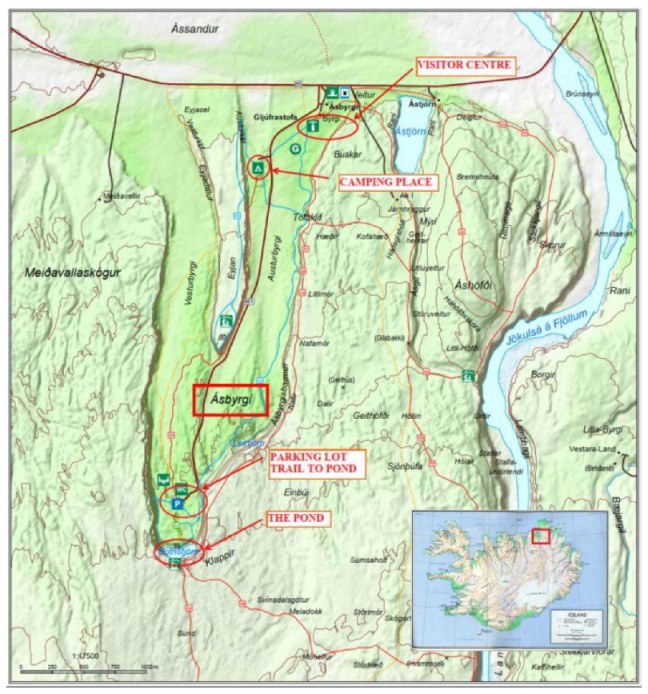
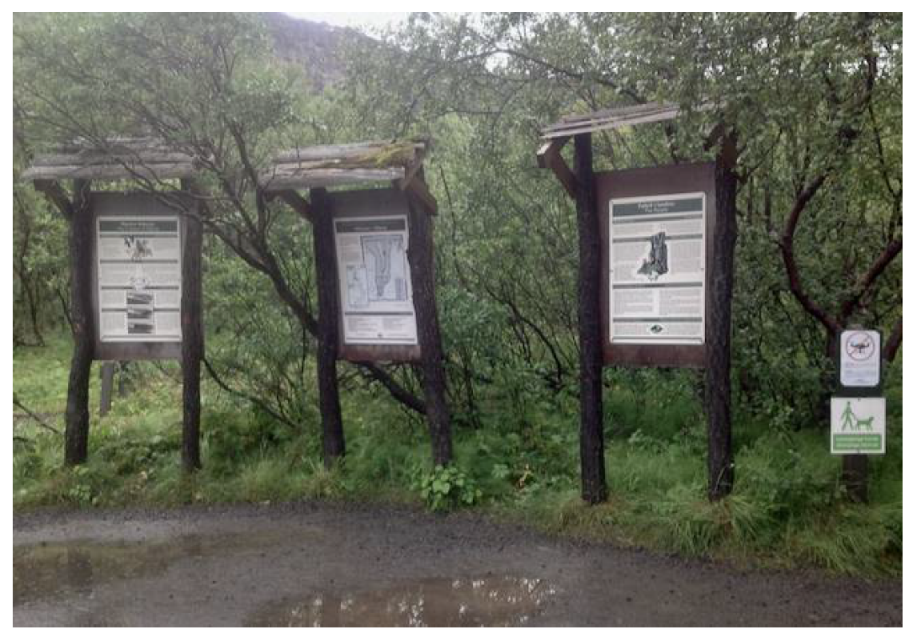
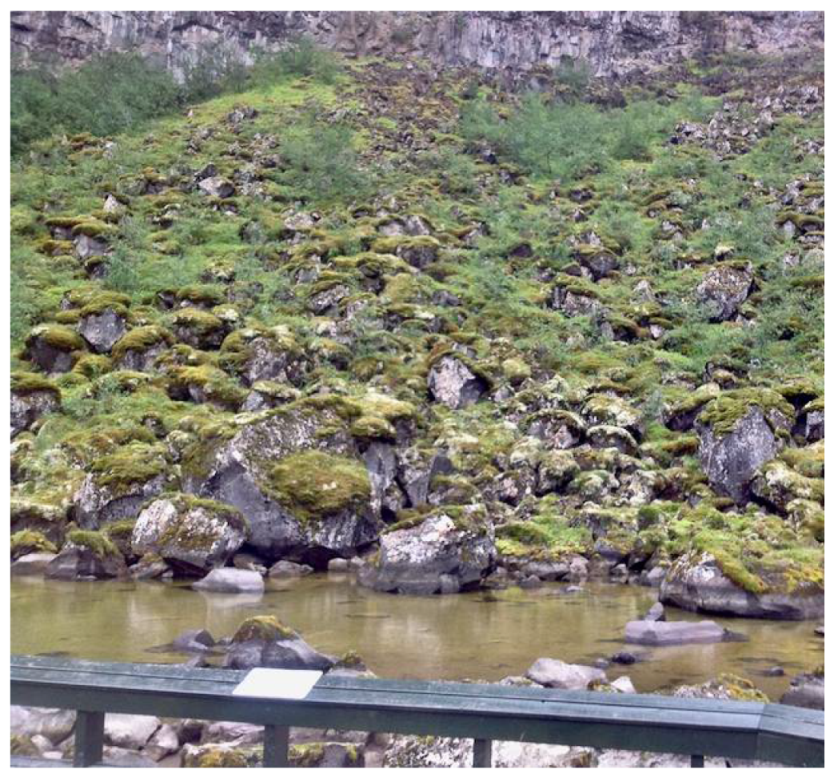

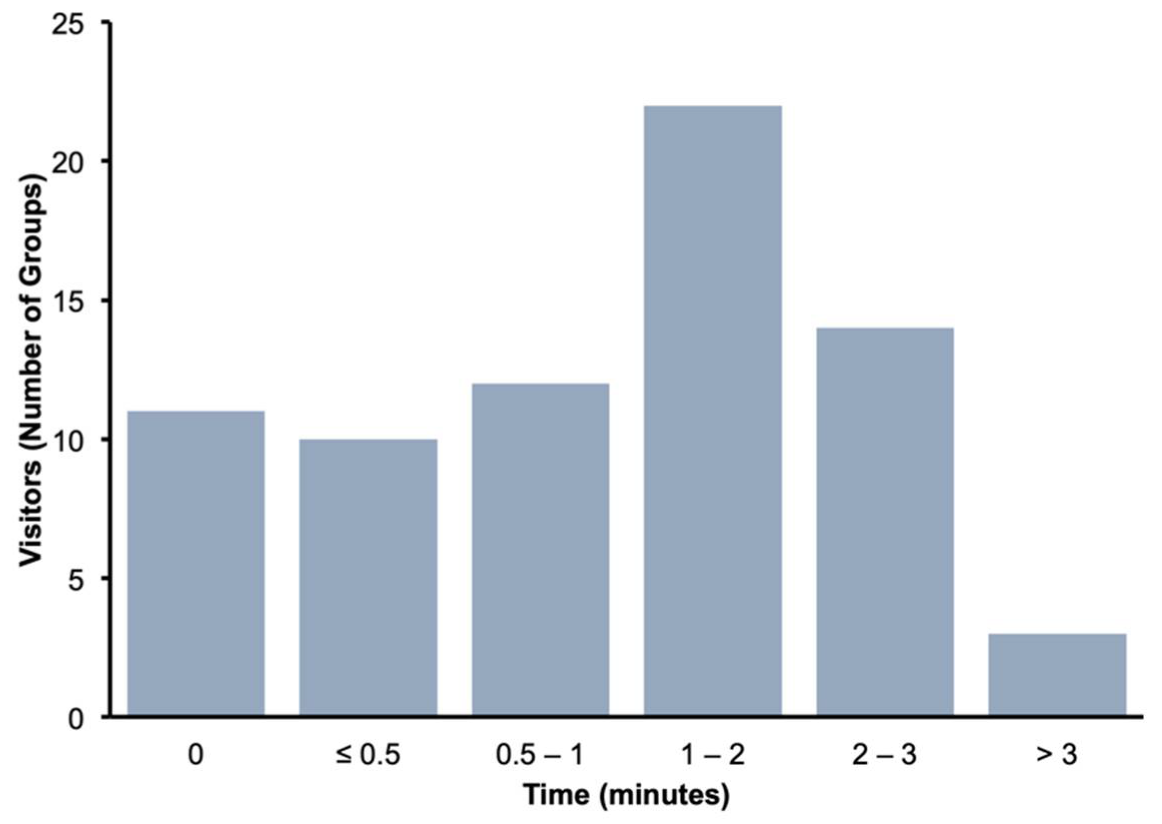
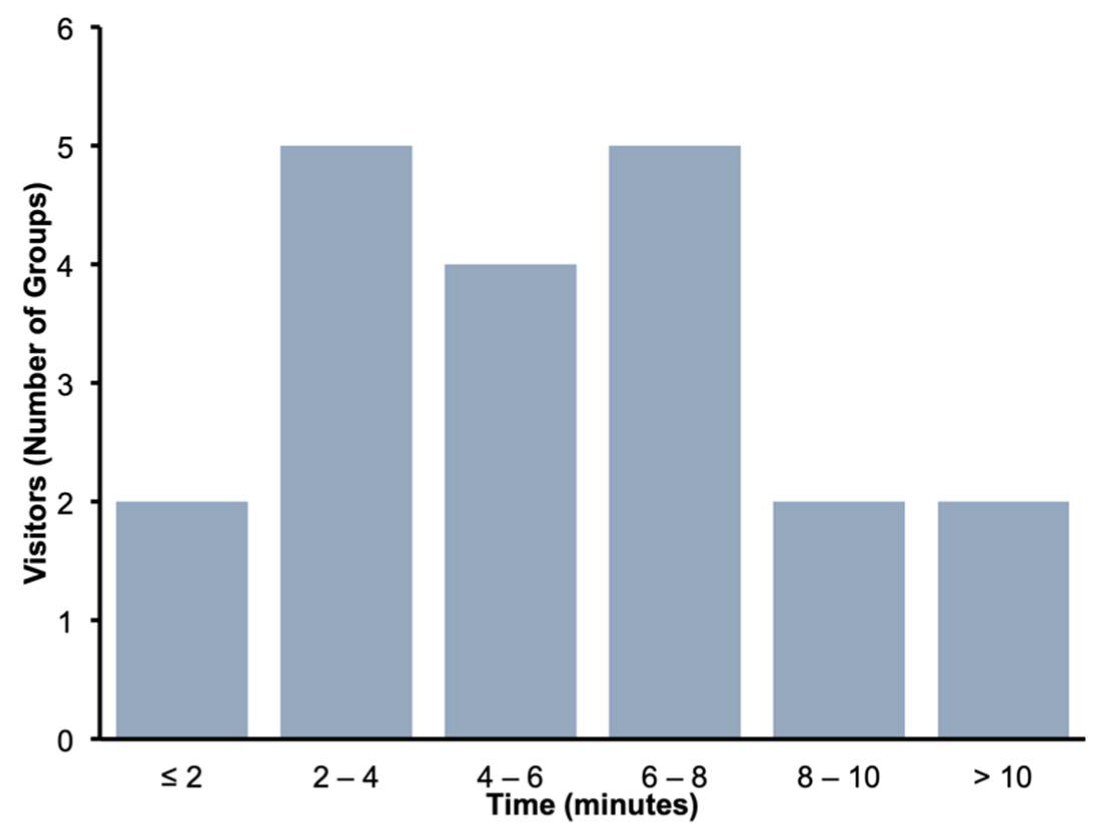
Publisher’s Note: MDPI stays neutral with regard to jurisdictional claims in published maps and institutional affiliations. |
© 2021 by the authors. Licensee MDPI, Basel, Switzerland. This article is an open access article distributed under the terms and conditions of the Creative Commons Attribution (CC BY) license (https://creativecommons.org/licenses/by/4.0/).
Share and Cite
Burns, G.L.; Haraldsdóttir, L.; Gunnarsdóttir, G.Þ. Interpretation in Ásbyrgi: Communicating with National Park Visitors in Iceland. Sustainability 2021, 13, 12592. https://doi.org/10.3390/su132212592
Burns GL, Haraldsdóttir L, Gunnarsdóttir GÞ. Interpretation in Ásbyrgi: Communicating with National Park Visitors in Iceland. Sustainability. 2021; 13(22):12592. https://doi.org/10.3390/su132212592
Chicago/Turabian StyleBurns, Georgette Leah, Laufey Haraldsdóttir, and Guðrún Þóra Gunnarsdóttir. 2021. "Interpretation in Ásbyrgi: Communicating with National Park Visitors in Iceland" Sustainability 13, no. 22: 12592. https://doi.org/10.3390/su132212592
APA StyleBurns, G. L., Haraldsdóttir, L., & Gunnarsdóttir, G. Þ. (2021). Interpretation in Ásbyrgi: Communicating with National Park Visitors in Iceland. Sustainability, 13(22), 12592. https://doi.org/10.3390/su132212592





